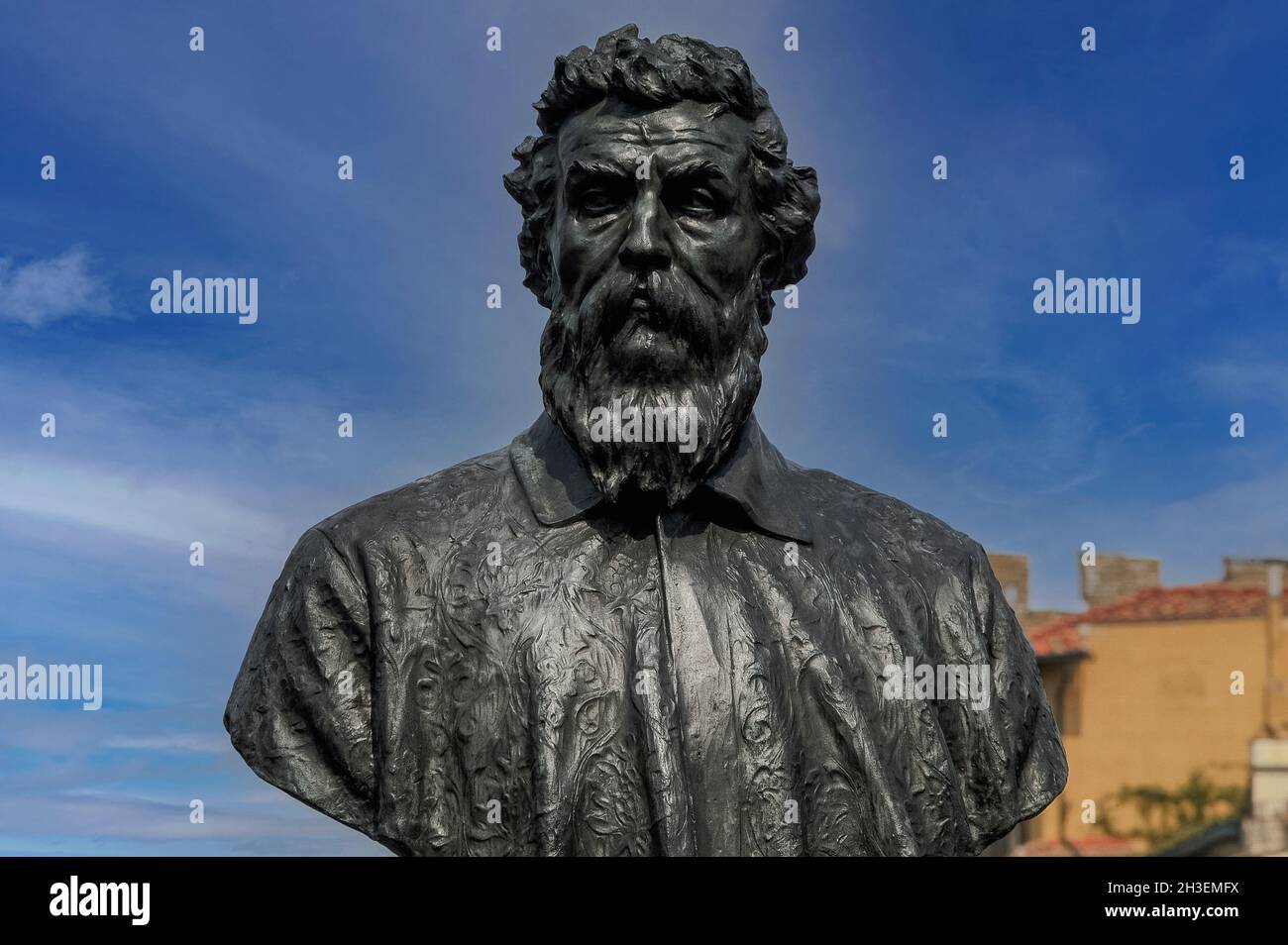Benvenuto Cellini, Renaissance goldsmith and sculptor (1500 - 1571). Early 20th century bust by Raffaello Romanelli (1856 – 1928), commissioned to commemorate the 400th anniversary of Cellini's birth. On the Ponte Vecchio in Florence, Tuscany, Italy.

Image details
Contributor:
Terence Kerr / Alamy Stock PhotoImage ID:
2H3EMFXFile size:
32.3 MB (1.1 MB Compressed download)Releases:
Model - no | Property - noDo I need a release?Dimensions:
4118 x 2740 px | 34.9 x 23.2 cm | 13.7 x 9.1 inches | 300dpiDate taken:
13 July 2010Location:
Ponte Vecchio, River Arno, Florence, Tuscany, ItalyMore information:
This image could have imperfections as it’s either historical or reportage.
Florence, Tuscany, Italy: a bust of Benvenuto Cellini (1500 – 1571), Florentine goldsmith, sculptor and writer, famous for the Cellini Salt Cellar and for his autobiography, in the centre of the central parapet on the north west side of the medieval Ponte Vecchio spanning the River Arno. The bust, by sculptor Raffaello Romanelli (1856 – 1928), was commissioned to commemorate the 400th anniversary of Cellini's birth and was inaugurated in May 1901. Cellini was born in Florence and apprenticed to a goldsmith there, but was banished to Siena in 1516 as a result of a brawl. He subsequently worked in Rome, Florence, Mantua, Venice and France. Flight from one city to another in Italy, and imprisonment, were features of his turbulent life as a consequence of accusations of killing, wounding, sodomy and embezzlement. A supreme example of Cellini's artistic achievement was a gold salt cellar, completed in 1540 for King Francis I of France and currently in the Kunsthistorisches Museum, Vienna. Other famous works include two medals for Pope Clement VII (now in the Uffizi, Florence), a bronze lunette of the Nymph of Fontainebleau (now in the Louvre), a bronze Perseus with the head of Medusa for Florence's Loggia dei Lanzi, where it now stands, a colossal bust of Cosimo de Medici (Bargello, Florence), and a marble crucifix (royal monastery of the Escorial, Spain). Cellini died in Florence and was buried in the church of Santissima Annunziata. His autobiography, completed in 1562, was first printed in Italy in 1728. D0571.A6834